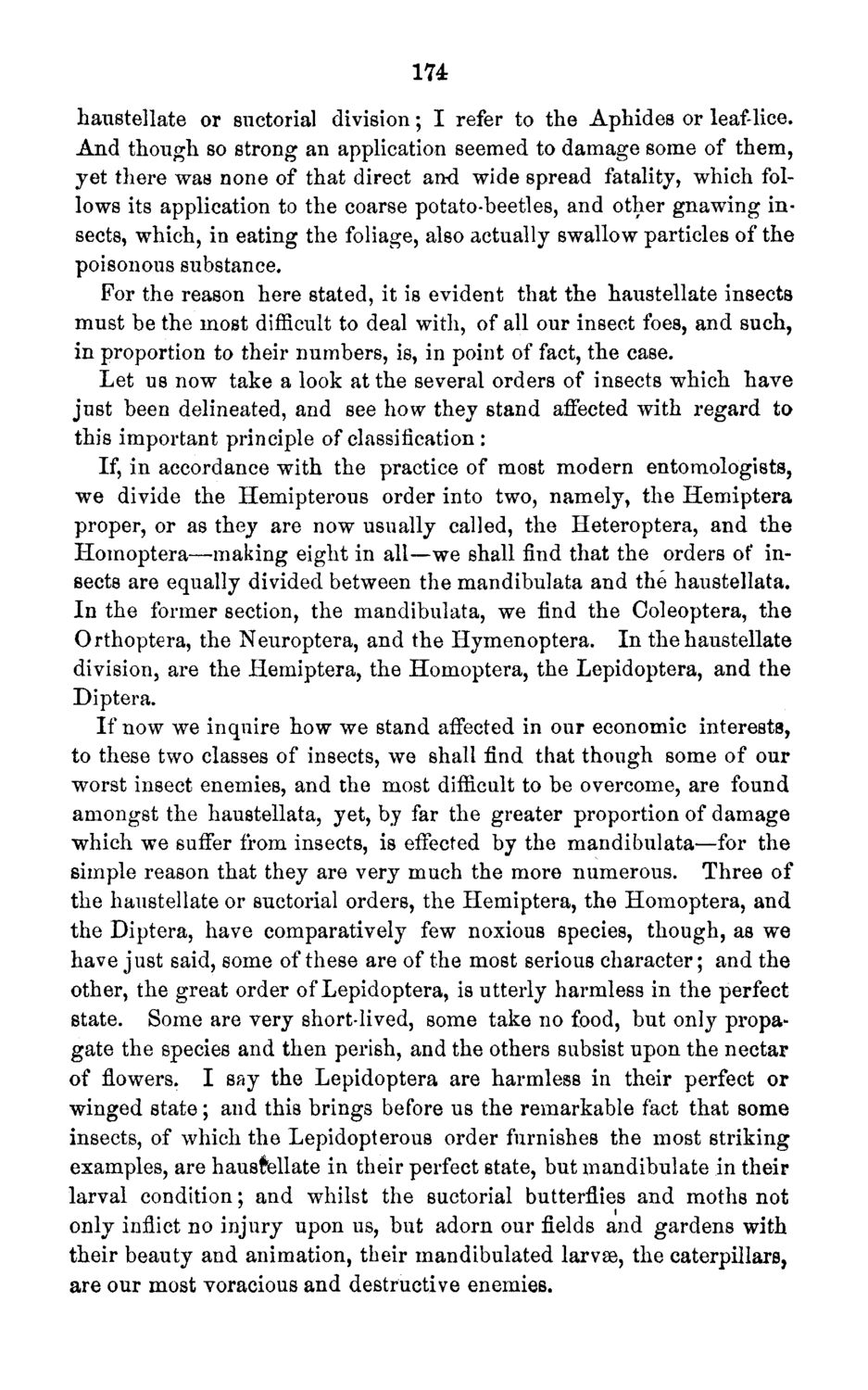| |
| |
Caption: Board of Trustees Minutes - 1871
This is a reduced-resolution page image for fast online browsing.

EXTRACTED TEXT FROM PAGE:
174: haustellate or suctorial division; I refer to the Aphides or leaf-lice. And though so strong an application seemed to damage some of them, yet there was none of that direct and wide spread fatality, which follows its application to the coarse potato-beetles, and other gnawing insects, which, in eating the foliage, also actually swallow particles of the poisonous substance. For the reason here stated, it is evident that the haustellate insects must be the most difficult to deal with, of all our insect foes, and such, in proportion to their numbers, is, in point of fact, the case. Let us now take a look at the several orders of insects which have just been delineated, and see how they stand affected with regard to this important principle of classification : If, in accordance with the practice of most modern entomologists, we divide the Hemipterous order into two, namely, the Hemiptera proper, or as they are now usually called, the Heteroptera, and the Homoptera—making eight in all—we shall find that the orders of insects are equally divided between the mandibulata and the haustellata. In the former section, the mandibulata, we find the Coleoptera, the Orthoptera, the Neuroptera, and the Hymenoptera. In the haustellate division, are the Hemiptera, the Homoptera, the Lepidoptera, and the Diptera. If now we inquire how we stand affected in our economic interests, to these two classes of insects, we shall find that though some of our worst insect enemies, and the most difficult to be overcome, are found amongst the haustellata, yet, by far the greater proportion of damage which we suffer from insects, is effected by the mandibulata—for the simple reason that they are very much the more numerous. Three of the haustellate or suctorial orders, the Hemiptera, the Homoptera, and the Diptera, have comparatively few noxious species, though, as we have just said, some of these are of the most serious character; and the other, the great order of Lepidoptera, is utterly harmless in the perfect state. Some are very short-lived, some take no food, but only propagate the species and then perish, and the others subsist upon the nectar of flowers. I say the Lepidoptera are harmless in their perfect or winged state; and this brings before us the remarkable fact that some insects, of which the Lepidopterous order furnishes the most striking examples, are haustellate in their perfect state, but mandibulate in their larval condition; and whilst the suctorial butterflies and moths not only inflict no injury upon us, but adorn our fields and gardens with their beauty and animation, their mandibulated larvae, the caterpillars, are our most voracious and destructive enemies.
| |